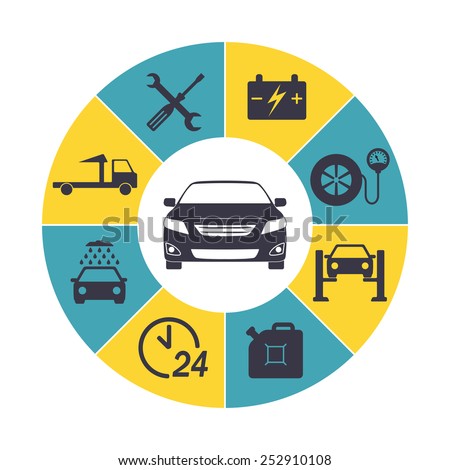Wondering About The Definition Behind Those Dashboard Warning Lights? Gain Understandings Right Into Their Implications For Your Lorry'S Safety And Upkeep
Wondering About The Definition Behind Those Dashboard Warning Lights? Gain Understandings Right Into Their Implications For Your Lorry'S Safety And Upkeep
Blog Article
Post By-Samuelsen Corbett
When you're behind the wheel, those glowing warning lights on your control panel can be a bit complicated. Do you understand what they're trying to inform you about your vehicle's health? Understanding the relevance of these lights is crucial for your safety and the longevity of your car. So, the next time one of those lights appears, would not you intend to understand its message accurately and take the required steps to resolve it?
Common Caution Lighting and Interpretations
Recognize typical warning lights in your automobile and recognize their significances to ensure risk-free driving.
One of the most typical caution lights include the check engine light, which signals problems with the engine or emissions system. If https://fernandojeysn.webbuzzfeed.com/30470480/the-ultimate-beginner-s-guide-to-explaining-your-cars-and-truck-in-just-one-hour comes on, it's critical to have your car inspected without delay.
The oil pressure warning light suggests low oil stress, needing prompt interest to prevent engine damage.
A blinking battery light might suggest a faulty charging system, possibly leaving you stranded otherwise attended to.
The tire pressure surveillance system (TPMS) light alerts you to low tire pressure, influencing automobile security and gas efficiency. Neglecting this can bring about dangerous driving conditions.
The abdominal light indicates an issue with the anti-lock stopping system, endangering your capacity to quit promptly in emergency situations.
Last but not least, the coolant temperature advising light warns of engine overheating, which can cause extreme damages otherwise fixed swiftly.
Understanding these typical caution lights will certainly assist you resolve issues promptly and maintain risk-free driving problems.
Relevance of Prompt Interest
Comprehending the usual warning lights in your vehicle is only the initial step; the importance of immediately resolving these warnings can't be emphasized sufficient to guarantee your safety and security on the road.
When a caution light brightens on your dashboard, it's your automobile's method of communicating a possible issue that requires interest. Ignoring these cautions can lead to a lot more serious problems later on, jeopardizing your safety and security and potentially costing you extra out of commission.
Prompt attention to alerting lights can prevent failures and crashes. For instance, a blinking check engine light might show a misfire that, if left ignored, can cause damages to the catalytic converter. Addressing this promptly can conserve you from a pricey repair service.
Likewise, a brake system alerting light may indicate low brake fluid or worn brake pads, crucial parts for your safety and security when driving.
Do It Yourself Troubleshooting Tips
If you see a caution light on your control panel, there are a few DIY troubleshooting pointers you can try before seeking professional help.
The first step is to consult your cars and truck's manual to comprehend what the details caution light indicates. In https://engine-remapping62739.blogoscience.com/36045822/triumph-story-recovering-an-ignored-automobile-via-professional-outlining can be as straightforward as a loose gas cap triggering the check engine light. Tightening up the gas cap may fix the trouble.
https://www.caranddriver.com/news/a38819559/gm-maintenance-repair-parts-online-selling/ is a low battery, which can set off numerous warning lights. Examining the battery links for rust and guaranteeing they're secure may fix the issue.
If a warning light persists, you can try resetting it by separating the vehicle's battery for a few mins and after that reconnecting it. In addition, checking your vehicle's fluid degrees, such as oil, coolant, and brake liquid, can help repair alerting lights associated with these systems.
Conclusion
To conclude, recognizing your cars and truck's warning lights is crucial for keeping your car running efficiently and securely. By quickly resolving these alerts and understanding what they suggest, you can prevent expensive repair services and prospective breakdowns.
Bear in mind to consult your automobile's handbook for certain details on each advising light and take action appropriately to ensure a hassle-free driving experience.
Remain educated, stay risk-free on the road!
